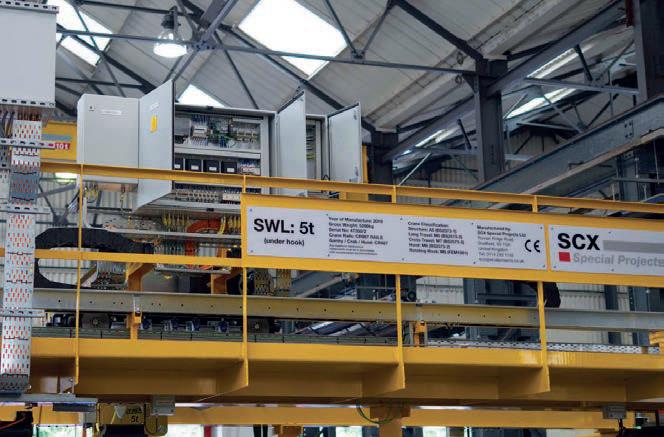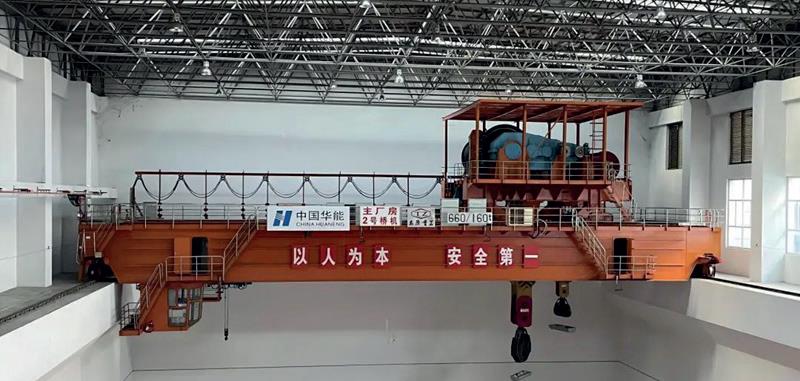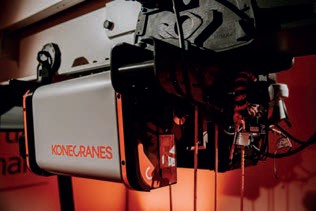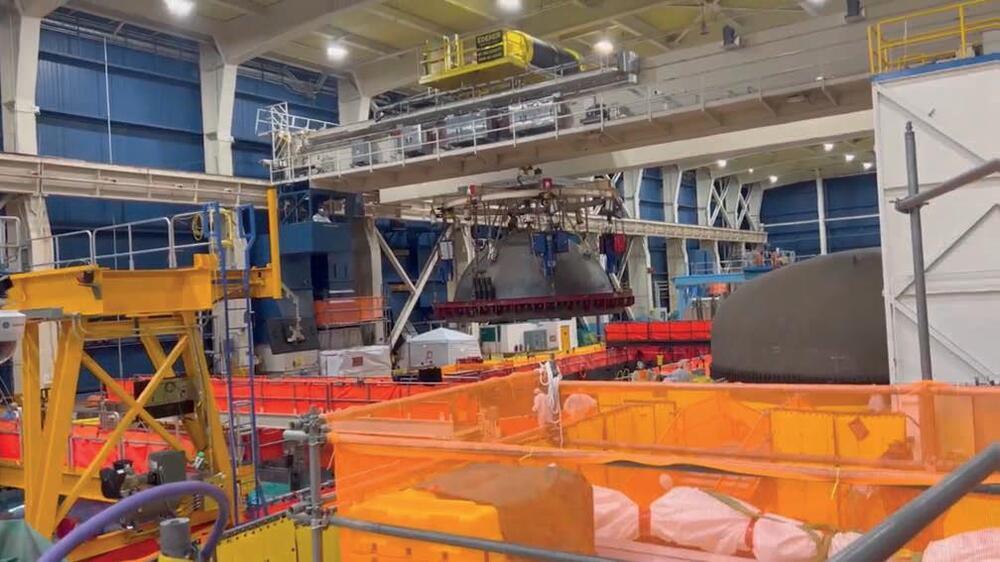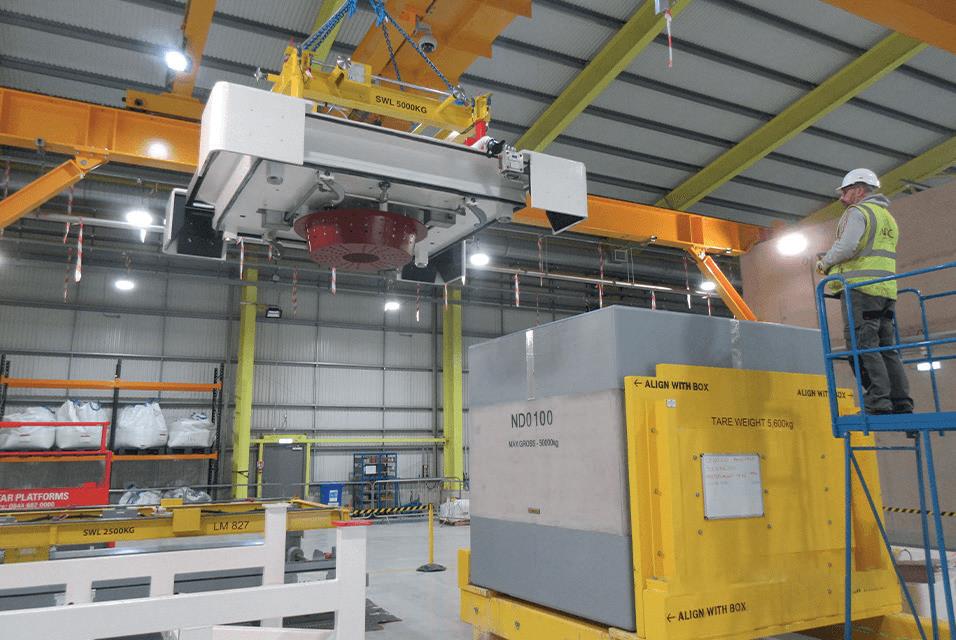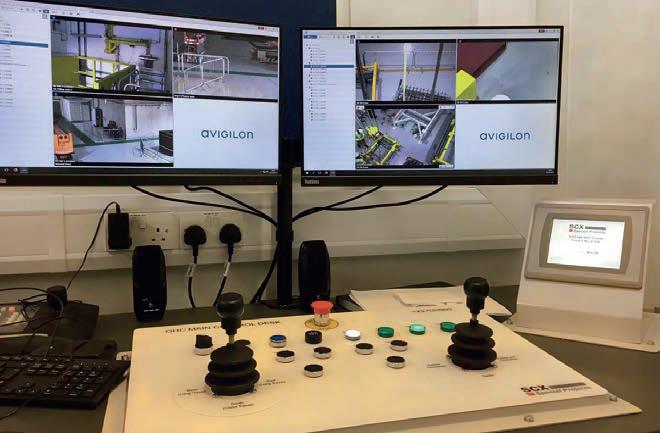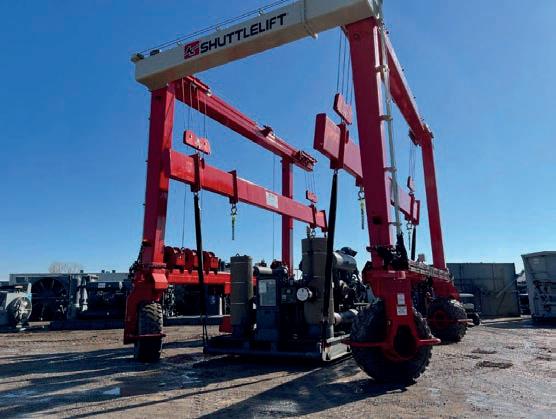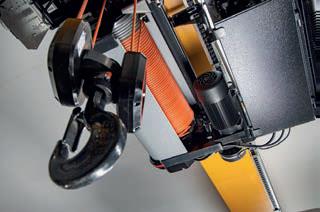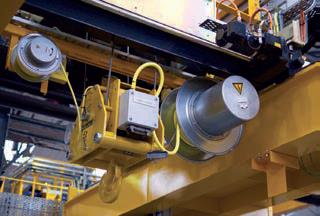The role of overhead cranes in decommissioning nuclear power plants
1 June 2023Starting with nuclear energy in the UK, Tony Rock reports on how overhead cranes around the world are being used in power applications.
Citing the need for “greater energy independence” following Russia’s invasion of Ukraine and the impact that has had on domestic energy prices, the UK government threw its weight behind the building of a new nuclear power plant in Suffolk towards the end of 2022 by investing £700m of the £20bn required for the Sizewell C facility.
Should it be constructed – as Hoist went to press, the development was being challenged in the High Court by environmental campaigners – it’s due to be operational by 2034: more than 75 years after the UK’s first nuclear power station, Calder Hall, opened in 1956.
With Britain’s use of nuclear energy stretching way back into the past as well as far ahead into the future, it’s clear the country has to not only build new facilities but must also safely decommission older plants too.
According to the Office for Nuclear Regulation, the UK’s independent nuclear regulator, Berkeley in Gloucestershire is the first commercial nuclear power station in the UK to be decommissioned. It came into service in 1962 and after 27 years of successful operation the twin-reactor station closed in 1989 and was fuel-free by 1992. It is now undergoing decommissioning, with Magnox, a subsidiary of the Nuclear Decommissioning Authority (NDA) – itself an executive non-departmental public body charged with cleaning up the UK’s earliest nuclear sites – managing and progressing the work plan on site.
A number of key activities have been carried out, including disposing of its 310t boilers – all 15 of have been sustainably recycled for future use – the demolition of buildings, and entering both reactors into a ‘safestore’ state. Priorities for the site now include removing all legacy wastes and emptying the active waste vaults.
Similarly, Hinkley Point A, which is located on the Somerset coast, has two reactors that are being decommissioned following their final shutdown in 2000. The focus is on the safe and secure retrieval, packaging and storing of its legacy waste.
As part of the process of preparing waste from Hinkley Point A and Berkeley for long-term storage, Magnox commissioned modular intermediatelevel waste encapsulation plants (MILWEP) that would package the waste for storage.
Each MILWEP facility required an overhead double girder crane that would run along concrete walls and a gantry for the loading and unloading of 6.0m³ concrete boxes. To alleviate the operator’s extended exposure to the active packages, accurate remote operation was key.
Procured for Magnox by NSG Environmental, which provides decommissioning and waste management solutions to the nuclear industry, the bespoke engineering firm SCX Special Projects engineered a handling solution based upon a versatile, commercial, off-the-shelf (COTS) crab and hoist design. Added capabilities included full-length maintenance platforms that run down one side of the bridge, safety systems, and a powered rotating hook block. Junction boxes, cable reelers and the power chains are orientated so that maintenance activities can be performed from the platforms.
“The nuclear sector demands high levels of safety and integrity that cannot be fulfilled by commercial off-theshelf lifting equipment on its own. Our innovative engineering approach takes proven components from reputable manufacturers and combines them with innovative protection systems to deliver a verified nuclear crane solution,” says SCX.
The two systems are near-identical, deploying bespoke lifting attachments. Coded plugs help the control system to identify each attachment, which perform a range of tasks critical to Magnox’s ongoing decommissioning efforts.
The cranes feature a 5.0t safe working load capacity, derated from 6.3t for safety, providing a true vertical lift path for the hook. A 13mm-diameter wire rope is configured into a dual rope system – “meaning if one fails, the load would be safely suspended by the second,” says SCX. The load is shared between the ropes via a balance beam, and the ropes terminate at load pins to allow individual load monitoring.
Each crane can be controlled both locally and remotely, featuring a radio pendant alongside a control desk located in the MILWEP control room. The control desk with ‘hold to run’ desk-mounted joysticks integrates with surveillance cameras and sensors on the crane that provide images and data to the operator. A human-machine interface provides information on the complete system, including crane status, errors and trips.
Side guidance rollers feature on the end carriages for both long and crosstravel motions. SCX says that these keep the crane square to the rails, ensuring that the view from the surveillance cameras is as ‘true’ as possible, which “is essential for remote use, enabling repeatability when using visual references for precise positioning”.
X-Y-Z motion limit switches set within the ultimate crane operating boundary ensure the crane performs a controlled stop and avoids overtravel. Separate to this is a trippable safety circuit, which sits outside the main control system for “ultimate protection against overtravel and hoist overloads”. The side guidance support structure provides a minimal drop distance to the crane rail in the unlikely event of a wheel, axle or bearing failure
Prior to installation, a complete factory acceptance test (FAT) procedure took place in SCX’s Sheffield test facility. This included load testing, and the verification of boundary limits and control systems. Further site acceptance testing (SAT) also took place.
In January, the Berkeley site transferred the first concrete box of radioactive waste into its purpose-built waste store.
“Leading the way with this trailblazing, first-of-a-kind work, the team has installed technology which enables remote access to Berkeley’s underground waste vaults to safely retrieve, package and treat intermediate-level waste,” said Mike Heaton, Berkeley site director.
“The new concrete box, that has been developed and used for the first time by Magnox at Berkeley, has been approved by our regulators for disposal. The boxes will be held at Berkeley for interim storage until a national repository becomes available.”
Paul Winkle, Magnox chief operating officer, said: “I was delighted to see the team at Berkeley successfully transfer the concrete box to the interim storage facility. This required a great team effort from across Magnox with excellent support and cooperation from our suppliers, regulators and colleagues across the NDA group.”
“This is a significant milestone in our mission to safely and securely decommission our legacy nuclear sites,” added David Stollard, programme manager for the NDA. “It was fantastic to see first-hand the culmination of many years of hard work and planning.
“It’s a collective achievement that the whole team are rightfully proud of, and we will be looking to take forward the lessons learned and apply them across our other sites.”
NUCLEAR MAINTENANCE
As well building new nuclear facilities and decommissioning them, nuclear plants have to be maintained too, of course.
The Tennessee Valley Authority in the US provides electricity for 153 local power companies serving ten million people in Tennessee and parts of six surrounding states, as well as directly to 58 large industrial customers and federal installations. It operates the Browns Ferry Nuclear Plant, and earlier this year, during a scheduled refuelling and maintenance outage, it had to remove the Unit 2 123- ton reactor pressure vessel head in what is the heaviest lift on the refuelling floor. Included in the lift is the strongback and carousel (lifting devices) that the detensioners hang from. The overhead crane is an Ederer, made in Seattle, and it has two hooks: one rated at 125 tons, while the small hook is rated at 5.0 tons.
Before being taken offline, Unit 2 is said to have operated safety for 665 consecutive days – Browns Ferry’s first ‘breaker-to-breaker’ run (where “a plant has operated at full power from the completion of one refuelling outage to the commencement of the next without any planned or unplanned outages or power reductions”, according to a Law Insider definition), and a new unit continuous operation record. Unit 2 generated more than 20 billion kilowatthours of carbon-free electricity during that run.
In other nuclear news, nuclear energy firm Framatome is partnering with American Crane to design the fuel handling equipment that will transport fuel assemblies for NuScale Power’s VOYGR small modular reactor (SMR) power plants, according to World Nuclear News.
NuScale Power has awarded two new contracts to Framatome to design fuel handling equipment and fuel storage racks. The equipment will build on proven Framatome designs with additional enhancements to fully perform remote fuel handling.
VOYGR SMR plants are to be powered by NuScale Power Module, the first SMR to receive design approval from the US Nuclear Regulatory Commission (NRC). The NuScale Power Module design was developed to supply energy for electrical generation, district heating, desalination, commercial-scale hydrogen production and other process heat applications.
The Carbon Free Power Project (CFPP), spearheaded by Utah Associated Municipal Power Systems, will be the first VOYGR SMR power plant to begin operation in the US. The six-module plant will be built at the Idaho National Laboratory in Idaho Falls, and will generate 462MW of carbon-free electricity. It will be fully operational by 2030.
Konecranes signs Dubai crane and service contract
Konecranes is to supply 12 S-series and CXT electric overhead cranes and nine jib cranes to Legnano Teknoelectric Company (LTC) Group’s new 30,000m2 manufacturing plant in Dubai, UAE.
LTC Group makes magnetic cores and laminations for transformers and reactors. Its new facility in Dubai will double its production capacity in the region and supply transformers for wind power, photovoltaic, hydroelectric, cogeneration and biomass facilities.
The cranes will support the entire material flow, from incoming raw materials to finished products. The 21-crane and service contract was booked in Q1 2023, with deliveries to take place from May 2023.
Konecranes will be responsible for the safe and optimised running of the cranes under a three-year annual maintenance contract, extending a business relationship with LTC Group that first started in 2011. The company will also modernise an existing crane at the site to enhance functionality.
“Our production line uses high-quality materials and the manufacturing process needs both reliable and cutting-edge equipment. Konecranes’ products and services meet those needs, which made it natural to choose them for this project,” says Mauro Mereghetti, managing director, LTC Middle East FZCo.
“Customers like LTC Group are increasingly asking for equipment and services that reliably and safely support their material flow, and with reduced carbon emissions. Our cranes do just that, delivering precise lifting while significantly cutting down on wear and tear,” says Ajit Kumar, Konecranes’ director industrial cranes, UAE.
Natural gas gantry crane
Archrock, an energy infrastructure company that provides midstream natural gas contract compression services in the US, took delivery of a Shuttlelift SL100II earlier this year.
“Our new, customised Shuttlelift SL100II is a great addition for Archrock to handle our large-horsepower natural gas compressors. This mobile gantry crane will allow us to operate more safely and efficiently as we load, unload, and move our compression units at our Yukon, OK Make Ready Facility,” says, Walter Williams, Archrock’s director Make Ready.
The crane has a 100-ton lifting capacity and all-wheel electronic steering and comes equipped with an LED Light Package as well as a Cold Start Package.
Archrock’s natural gas compression services help customers with the following tasks: wellhead compression, transmission and storage, gas processing and gas gathering.
Hydropower refurbishment project
Huaneng Jinghong, a hydropower plant is located on Lancang river/basin in Yunnan, China, had its main plant bridge crane control system refurbished earlier this year by Weite Technologies.
There are two 660-ton bridge cranes in the main workshop of the power plant, which are mainly used to lift the rotors and runners of the hydroelectric generating units.
They have been in operation for about 15 years, but with some components showing their age, the failure rate had begun to increase, restricting not only the cranes’ maintenance capability, but also posing an increased safety risk during the major lifting operations.
The upgrades carried out included, for example, using domestic programmable logic controllers (PLCs) to replace the original imported products as the core control components.
Weite Technologies says the refurbishment met the required standards and was completed on schedule.
